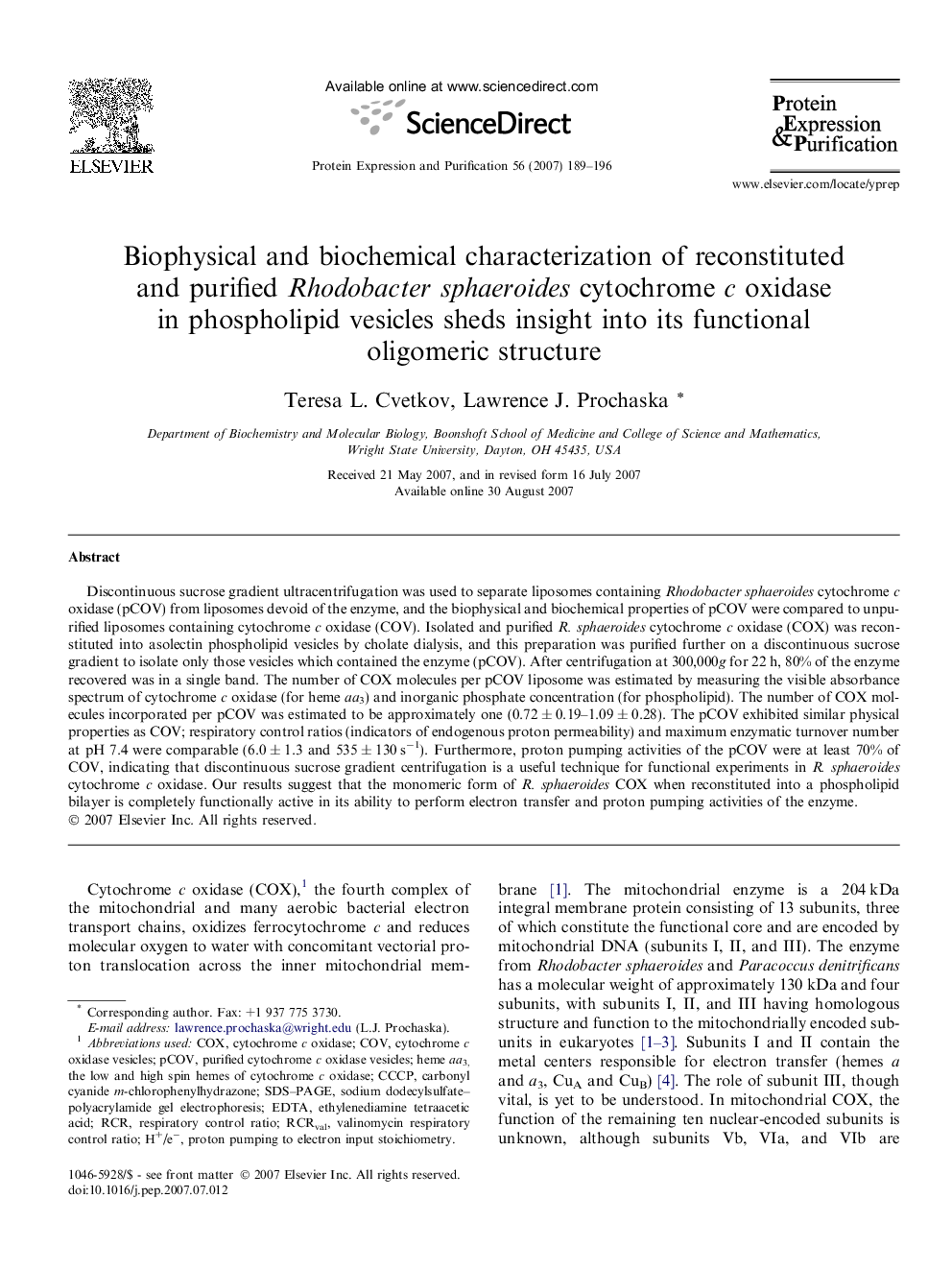| Article ID | Journal | Published Year | Pages | File Type |
|---|---|---|---|---|
| 2021742 | Protein Expression and Purification | 2007 | 8 Pages |
Discontinuous sucrose gradient ultracentrifugation was used to separate liposomes containing Rhodobacter sphaeroides cytochrome c oxidase (pCOV) from liposomes devoid of the enzyme, and the biophysical and biochemical properties of pCOV were compared to unpurified liposomes containing cytochrome c oxidase (COV). Isolated and purified R. sphaeroides cytochrome c oxidase (COX) was reconstituted into asolectin phospholipid vesicles by cholate dialysis, and this preparation was purified further on a discontinuous sucrose gradient to isolate only those vesicles which contained the enzyme (pCOV). After centrifugation at 300,000g for 22 h, 80% of the enzyme recovered was in a single band. The number of COX molecules per pCOV liposome was estimated by measuring the visible absorbance spectrum of cytochrome c oxidase (for heme aa3) and inorganic phosphate concentration (for phospholipid). The number of COX molecules incorporated per pCOV was estimated to be approximately one (0.72 ± 0.19–1.09 ± 0.28). The pCOV exhibited similar physical properties as COV; respiratory control ratios (indicators of endogenous proton permeability) and maximum enzymatic turnover number at pH 7.4 were comparable (6.0 ± 1.3 and 535 ± 130 s−1). Furthermore, proton pumping activities of the pCOV were at least 70% of COV, indicating that discontinuous sucrose gradient centrifugation is a useful technique for functional experiments in R. sphaeroides cytochrome c oxidase. Our results suggest that the monomeric form of R. sphaeroides COX when reconstituted into a phospholipid bilayer is completely functionally active in its ability to perform electron transfer and proton pumping activities of the enzyme.
